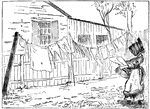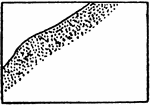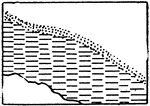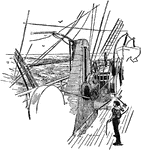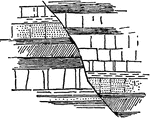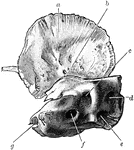
Temporal Bone at Birth
Inner surface of right temporal bone at birth. am squamozygomatic; b, petrosquamosal suture and foramen…
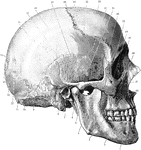
Side of the Skull
Shown is norma lateralis, which refers to the side of the skull. Labels: 1, mental foramen; 2, body…
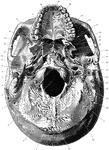
Base of the Skull
Shown is norma basalis, which refers to the base of the cranium. Labels: 1, external occipital crest;…
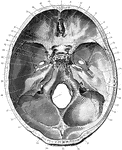
Base of the Skull Seen From Above
Shown is the base of the skull seen from above. Labels: 1, frontal bone; 2, slit for nasal nerve; 3,…

Hanging Clothes
An illustration of clothes hanging on a clothes line with shoe sand gloves resting beneath.

Richard II
Richard II (6 January 1367 – ca. 14 February 1400) was King of England from 1377 until he was…
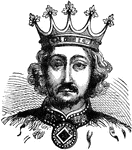
Richard II of England
Richard II (6 January 1367 – ca. 14 February 1400) was King of England from 1377 until he was…
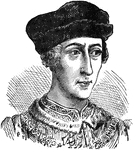
Henry V of England
Henry V (16 September 1386 – 31 August 1422) was one of the most significant English warrior kings…

Parabola
Illustration showing a parabola as a curve formed by the intersection of the surface of a cone with…

Ellipse
Illustration showing an ellipse formed by the intersection of the surface of a cone with a plane neither…

Cycloid
Illustration showing a cycloid curve. "The curve generated by a point in the plane of a circle when…

Cycloids
Illustration showing cycloid curves. "The curve generated by a point in the plane of a circle when the…
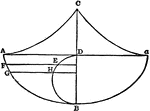
Cycloid
Illustration showing a cycloid curve. "The curve generated by a point in the plane of a circle when…
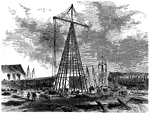
Derrick
An illustration of an iron derrick, a lifting device composed of one mast or pole which is hinged freely…

Puritan Costumes
A Puritan of 16th and 17th century England was an associate of any number of religious groups advocating…
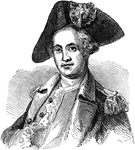
Mordecai Gist
Mordecai Gist (1743-1792) was a general who commanded the Maryland Line in the Continental Army during…
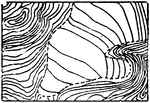
Glacier Contours
In cartography, a contour line (often just called a "contour") joins points of equal elevation (height)…

Glacier Form Lines
In cartography, a contour line (often just called a "contour") joins points of equal elevation (height)…
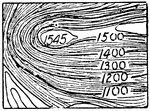
Contour System
In cartography, a contour line (often just called a "contour") joins points of equal elevation (height)…
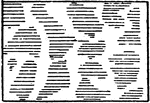
Tidal Flats of any Kind
The typical representation of shore lines and low-water lines with tidal flats of any kind on a topographical…

Street Car
An illustration of a horse-drawn street car. The first passenger services in the world were started…
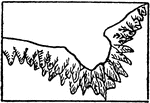
Rocky Ledges
The typical representation of shores and low-water lines with rocky ledges on a topographical map.
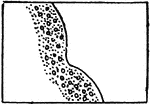
Gravel and Rocks
The typical representation of shores and low-water lines with gravel and rocks on a topographical map.

City Transportation
"Transportation in a large city, showing elevated road, surface line, and subway." -Gordy, 1916

Lather's Hatchet
It has a large flat blade with a straight edge. At the back is a peen or hammer head, and in the middle…
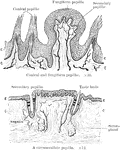
Papillae of the Tongue
The upper illustrations show conical and fungiform papillae, the lower a circumvallate papilla. Labels:…
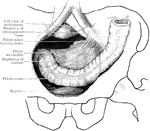
Iliac and Pelvic Colons
The iliac and pelvic colons, from a formalin-hardened male body, aged 30. The pelvic colon was usually…

Development of the Great Omentum
Diagram to illustrate the development of the great omentum. A, shows the beginning of the great omentum…
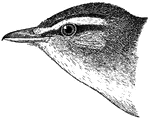
Red-eyed Vireo
The Red-eyed Vireo, Vireo olivaceus, is a small American songbird, 13-14 cm in length. It is somewhat…
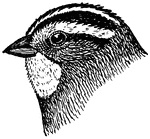
White-throated Sparrow
The White-throated Sparrow, Zonotrichia albicollis, is a passerine bird of the American sparrow family…

Swamp Sparrow
The Swamp Sparrow, Melospiza georgiana, is a medium-sized sparrow. Adults have streaked rusty and black…

Satellite
"Nodal Cubic, with four primary lines and their satellite. In the diagram, ABC is the satellite line.…
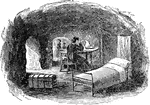
Cave Life in Vicksburg
During the siege, Union gunboats lobbed over 22,000 shells into the town and army artillery fire was…
Maria Pia Bridge
The Maria Pia bridge (Ponte Maria Pia) is a railway bridge built in 1877 by Gustave Eiffel in Porto,…

Centipede
Centipedes are arthropods belonging to the class Chilopoda and the Subphylum Myriapoda. They are elongated…
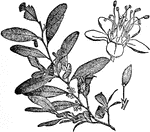
Coca Flower
Coca is a plant in the family Erythroxylaceae, native to north-western South America. The plant plays…
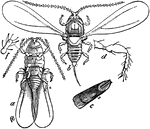
Scale Insect
"Scale-insect. Oyster-shell bark-louse of the apple (Mytilaspis pomorum); male. a, ventral view with…
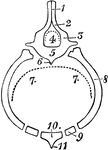
Diagram of Mammilian Thorax
Diagrammatic transverse section from the skeleton of a mammalian thorax, showing the chief features…

Scorpion Diagram
"Diagram of structure of Scopionidae (most of the appendages removed). IV. to XX., fourth to twentieth…

Fort Wayne
Fort Wayne was established 1839 in Indian Territory by Lt. Col. R.B. Mason of the 1st Dragoons. Named…

Inferior Aspect of Horse Skull
Inferior aspect of horse's skull, the mandible being removed. Above the line A is the posterior region…

Stevens's Ironclad Floating Battery
Robert Livingston Stevens applied the wave line, concave waterlines on a steamboat hull, in 1808.

Hieroglyphic Panel
An illustration of an Egyptian hieroglyphic panel with a cartouche. In Egyptian hieroglyphs, a cartouche…
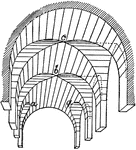
Vaults, Penetrations and Intersections
A: Penetrations by small semi-circular vaults sprung from same level. B: Intersection by small semicircular…

Turk's Head
"Turk's Head -- With fine line (very dry) make a clove hitch round the rope; cross the bights twice,…
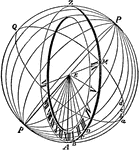
Vertical South Dial
In the common vertical dial, the shadow-receiving plane is aligned vertically; as usual, the gnomon's…
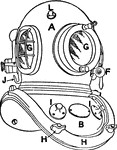
Diving Helmet (Front)
A front view of a diving helmet. A, Helmet; B, Breastplate; F, Emergency cock; G, Glasses in frame;…

Diving Helmet (Top)
Top view of diving helmet. C, Air inlet valve; E, Regulating outlet valve; G, Glasses in frames; L,…
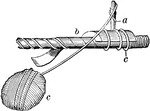
Serving Mallet
"A semicylindrical piece of wood, fitted with a handle...used for convenience in serving ropes...to…
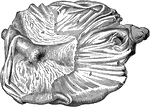
Horse Stomach
Internal aspect of a horse stomach, opened from below. Labels: a, cuticular mucous membrane; b, villous…

Bonellia Viridis (Female)
Illustration of a female green spoonworm. A, Proboscis cut short; B, bristle passing though the mouth…
!["The principle of proving a mineral field by boring is illustrated in [the illustration], which represents a line direct from the dip to the rise of the field, the inclination of the strata being one in eight." -Britannica, 1910](https://etc.usf.edu/clipart/58700/58761/58761_proving-mine_mth.gif)
Proving Mineral Field
"The principle of proving a mineral field by boring is illustrated in [the illustration], which represents…

